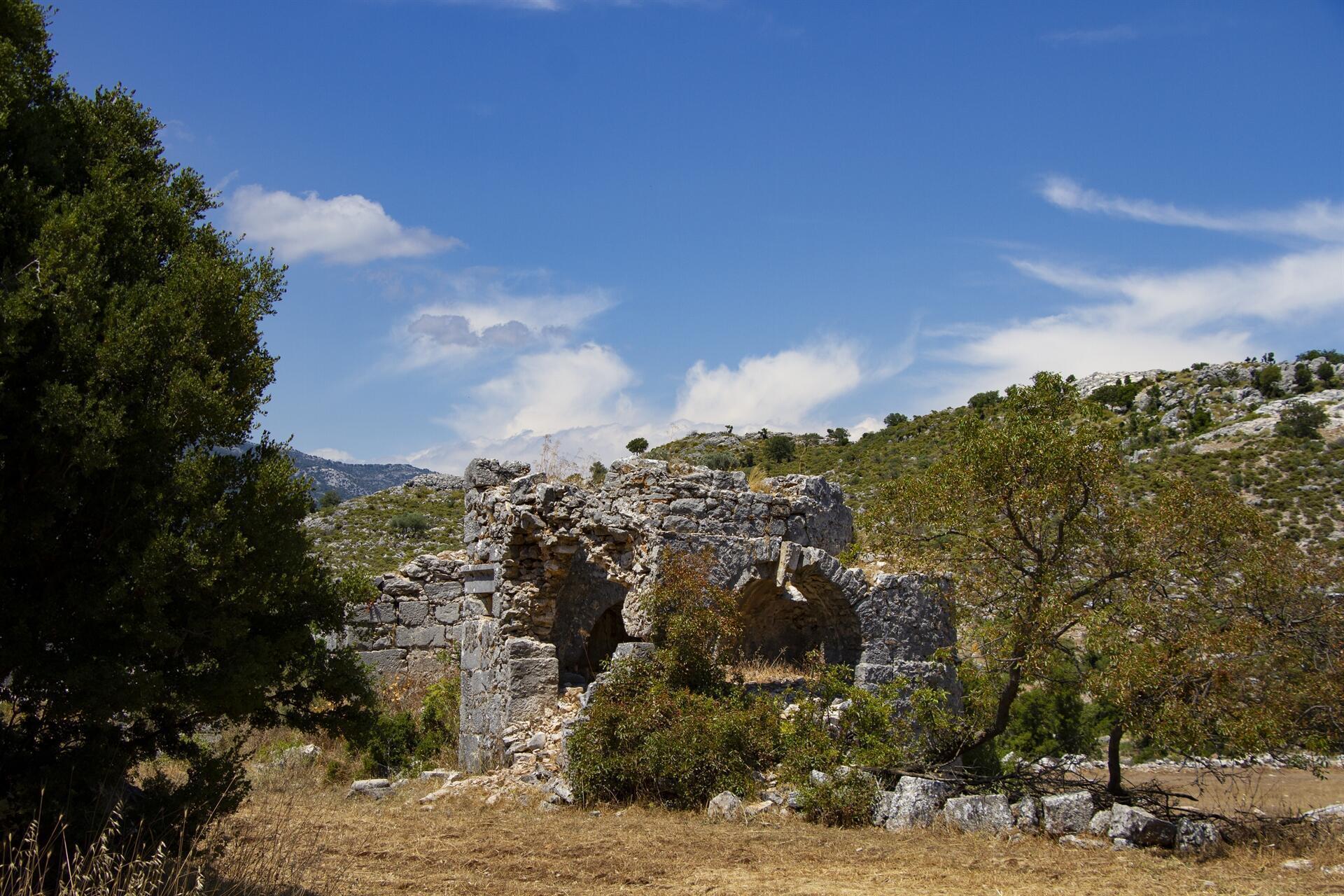
The residents of the Dodurga neighborhood of the Seydikemer district of the western province of Muğla continue living among the ruins of the ancient city of 2,000-year-old Sidyma.
The history of Sidyma ancient city, which is 50 kilometers from Seydikemer district, which is one of the important tourism routes of Muğla, dates back to the first century B.C. Daily life continues uninterruptedly in the Dodurga neighborhood, which borders the ancient city.
The Roman-era Artemis Shrine, theater, rock tombs with an interesting architecture, the stoa, which is standing in the middle of the neighborhood with its columns next to the bathhouse and church, take the residents of the neighborhood on a journey in history.
Domestic and foreign tourists coming to the ancient city are also witnessing interesting life stories that intertwine with history.
It is noteworthy that mostly old women, the majority of whom are alone, live in the neighborhood. The residents of the neighborhood, who continue their daily lives among the ruins of the ancient city, are engaged in weaving besides agriculture and animal husbandry.

Neighborhood residents are also appreciated for their mutual relations and support for each other.
Speaking to the state-run Anadolu Agency, Seydikemer governor Haktan Gökçekuyu said that Dodurga is among the most beautiful spots of the district with the historical texture.
Stating that the residents of the neighborhood are like voluntary tourism ambassadors and guarding history, Gökçekuyu said, “Those living in the region are engaged in agriculture and animal husbandry, and also work as volunteer tourism ambassadors. Our residents also provide information about the ancient city to those who visit the region. “
Emine Türk, 81, who lives in Dodurga district, stated that she did not think of leaving her birthplace even though her seven children were in different places to work.
Stating that she was engaged in animal husbandry and agriculture when she was young, Türk said, “I stayed in the village until this age. Although I have difficulty looking after myself, I don’t go to my children who want me to live with them. I can’t leave this place.”
Kezban Ece, 77, stating that she was 16 years old when she came to the neighborhood, said that she lost her husband 10 years ago and her eight children left the neighborhood after getting married.
She said that she raised her children by working in the weaving business, and added, “I love our village very much. My children want to take me, but I am not going. I bought a chicken from the mukhtar and began producing it myself. I will live here until I die.”
Ayşe Aydoğan, 79, said that she continued to live in the village where she was born.
Stating that she loved Dodurga very much, Ganime Gökmen, 73, said that none of her eight children raised in the village were with her and preferred to live in history.
Another resident, Meliha Mete said that she raised her seven children thanks to agriculture, animal husbandry and weaving works. Mete, who mentioned that her house is next to the historical ruins, said that she is happy to live in Dodurga.